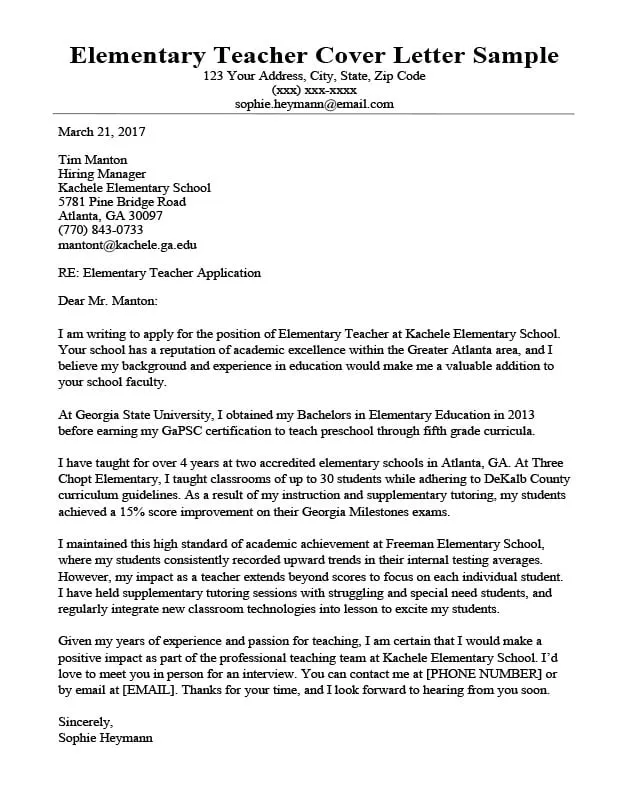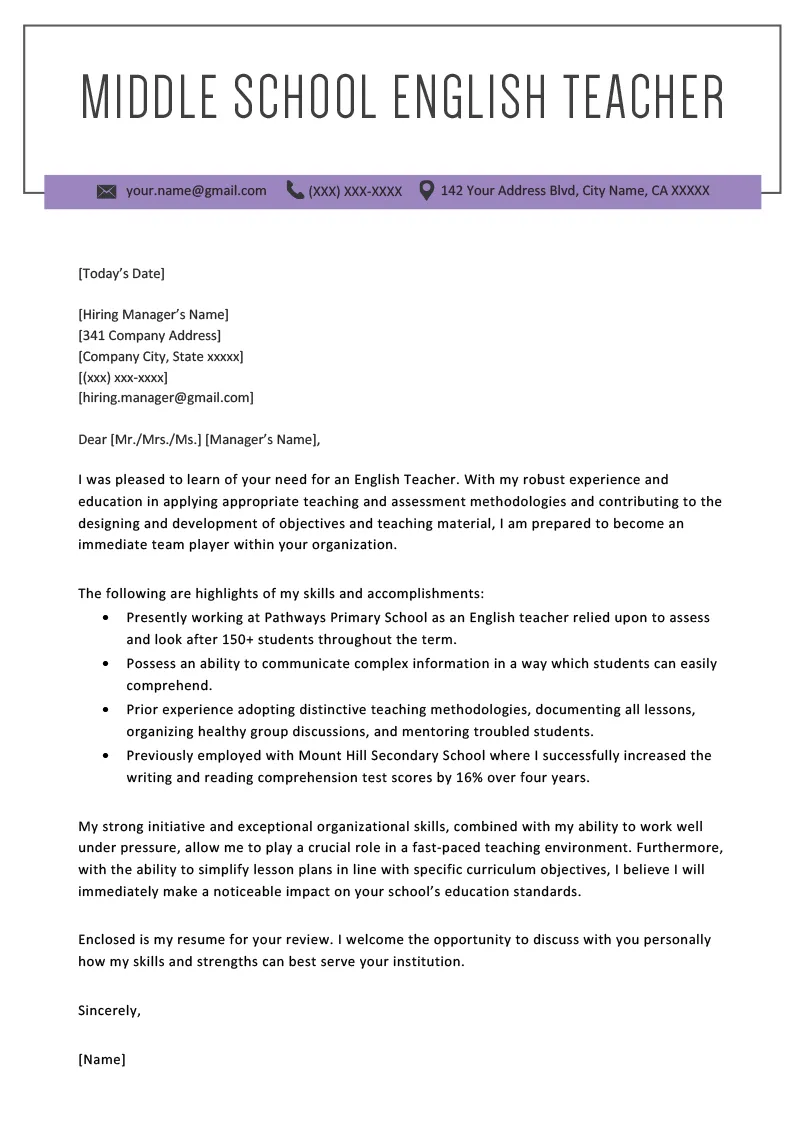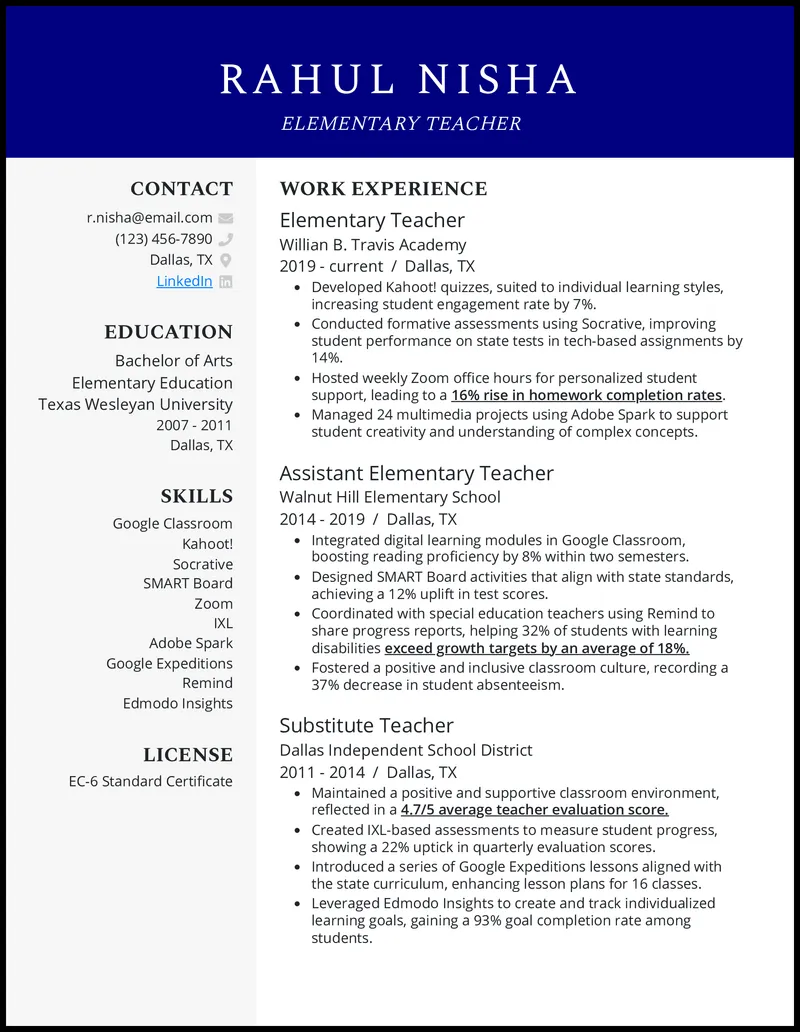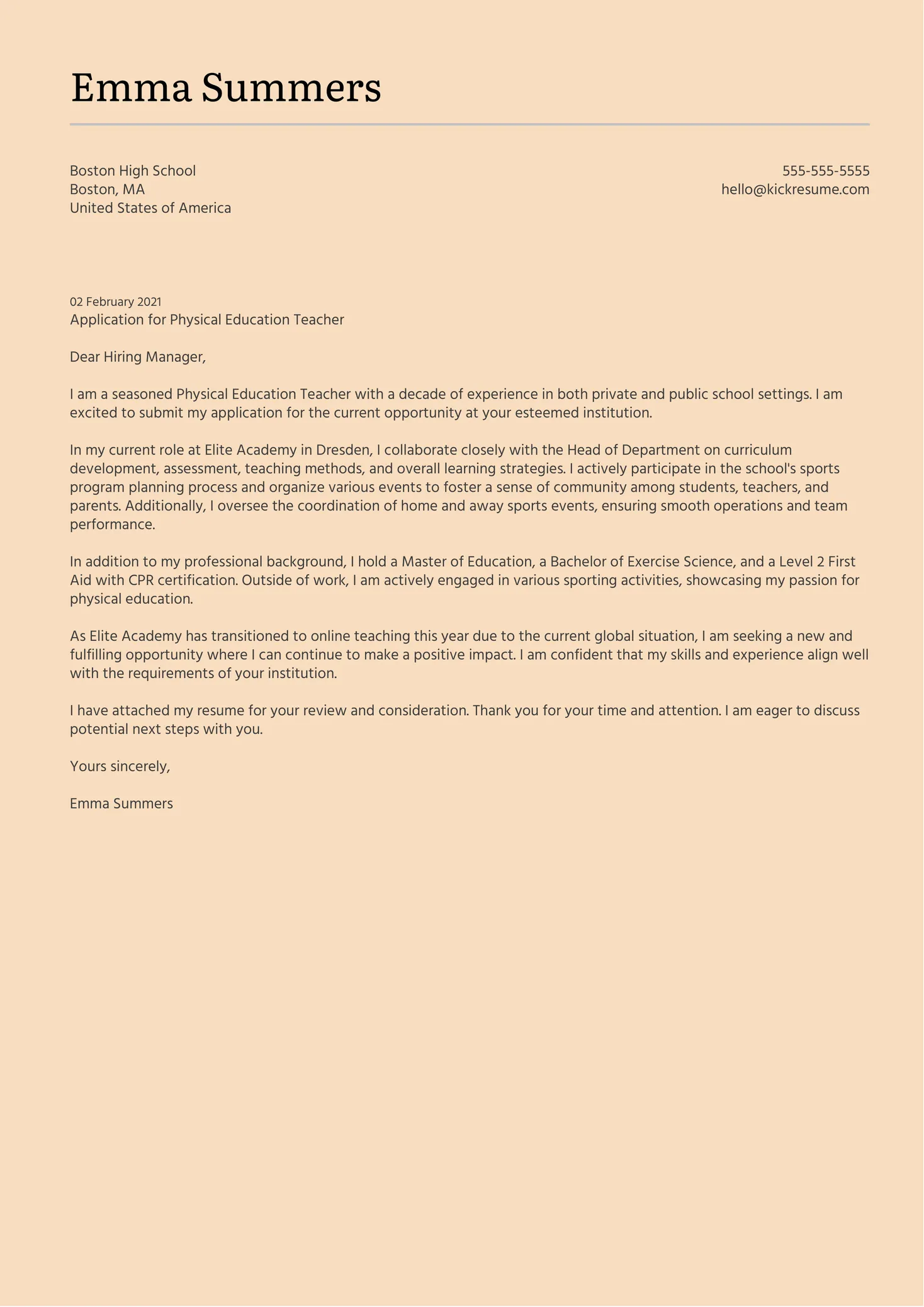What Is a Teaching Cover Letter
A teaching cover letter is a crucial document that accompanies your resume when applying for teaching positions. It serves as your personal introduction to the hiring committee, allowing you to highlight your qualifications, skills, and experiences in a way that a resume alone cannot. Unlike a resume, which provides a factual overview of your background, a cover letter allows you to express your passion for teaching, demonstrate your understanding of the school’s needs, and showcase your personality. It’s your chance to make a strong first impression and convince the employer that you’re the perfect fit for the role. This guide will walk you through crafting a compelling cover letter that grabs attention and increases your chances of landing an interview.
Why is a Teaching Cover Letter Important
In the competitive field of education, a well-crafted cover letter can set you apart from other applicants. It provides an opportunity to elaborate on specific experiences and skills that align with the job requirements. A strong cover letter demonstrates your enthusiasm for the position and your commitment to the field of education. By highlighting relevant accomplishments and tailoring your letter to the specific school or district, you show that you’ve done your research and are genuinely interested in the opportunity. It’s an essential tool for making a positive first impression, showcasing your unique qualifications, and ultimately, securing an interview. Ignoring this step might result in you being overlooked. It’s your chance to provide context to your resume and give life to your experiences.
Essential Components of a Teaching Cover Letter

A compelling teaching cover letter comprises several key components that work together to create a persuasive narrative. The structure of the letter should be clear, concise, and easy to read. By including these elements, you’ll increase your chances of making a strong impression. Make sure to adhere to these sections to provide information necessary for the hiring team and make sure you get the chance of interview. A well-structured letter demonstrates professionalism and attention to detail, qualities highly valued in educators. Your goal is to provide necessary information and present yourself as the best fit for the position. It should be clear why you are the perfect choice.
Header Information
Begin your cover letter with a professional header that includes your contact information (name, phone number, email address, and optionally, your LinkedIn profile URL). Following this, include the date and the recipient’s contact information (name, title, school/district name, and address). Ensure that your header is well-formatted and consistent with the overall tone of your letter. Always double-check the accuracy of the recipient’s information to show your attention to detail and respect for the hiring process. Proper header formatting is the first sign that you’re a professional, and the information should be clear and easy to find.
The Greeting
The greeting sets the tone for your entire letter. Address the hiring manager or the specific person listed in the job posting if possible. If you’re unsure of the name, use a general salutation like “Dear Hiring Committee” or “Dear [School Name] Principal.” Avoid generic greetings such as “To Whom It May Concern.” Using a specific name demonstrates that you’ve taken the time to research the school and personalize your application. Your choice of greeting can influence the tone of your letter, and it’s important to remain professional and respectful. It is also a great way to gain attention and start the process to become the best fit for the position.
Opening Paragraph How to write

Your opening paragraph should immediately grab the reader’s attention. State the specific position you’re applying for and how you learned about it. Briefly mention why you’re excited about the opportunity and what makes you a strong candidate. Highlight your passion for education and your understanding of the school’s mission or values. This section is your chance to make a strong first impression and create a positive hook. Use keywords from the job description to show that you’ve tailored your letter to the specific role. The first paragraph should be compelling enough to keep the reader interested and entice them to continue reading your cover letter.
Highlighting Your Teaching Skills & Experience
The body of your cover letter should showcase your relevant teaching skills and experiences. Focus on the skills and experiences that are most pertinent to the job description. Provide specific examples of how you’ve demonstrated these skills in the past. Use the STAR method (Situation, Task, Action, Result) to provide context and demonstrate your achievements. Describe how you’ve created engaging lesson plans, managed a classroom effectively, and supported student learning. Showcase your abilities in areas such as curriculum development, classroom management, and student assessment. This is your opportunity to prove why you’re the best choice for the teaching position and how you have the experience required to thrive.
Quantifiable Achievements
Whenever possible, quantify your achievements to make them more impactful. Instead of saying “Improved student test scores,” state “Increased student test scores by 15% in one year.” Use numbers, percentages, and data to illustrate your successes. Provide concrete evidence of your impact on student learning and classroom outcomes. This could include improved student engagement, reduced disciplinary incidents, or successful implementation of new teaching strategies. Quantifiable achievements give potential employers a clear understanding of your capabilities. By presenting your accomplishments with data, you show that you’re not only skilled but also results-oriented.
Tailoring Your Cover Letter

Customize your cover letter for each position you apply for. Research the school or district and tailor your letter to match their specific needs, values, and mission. Reference the school’s website, mission statement, and recent news to show that you’ve done your homework. Highlight how your skills and experiences align with the school’s goals and what you can bring to their community. Demonstrating your understanding of the school and its needs significantly increases your chances of success. Be sure to highlight the most relevant of your previous experience. Generic cover letters are easily spotted, so investing time in customization is essential.
Closing the Letter
In your closing paragraph, reiterate your interest in the position and thank the hiring manager for their time and consideration. Express your enthusiasm for an interview and briefly mention your availability. Include a call to action, such as “I look forward to hearing from you soon.” Maintain a professional and positive tone throughout your closing. A well-crafted closing paragraph reinforces your interest in the position and leaves a lasting positive impression. A strong closing statement will ensure the hiring team remembers you when making a decision on an interview. Your goal is to provide necessary information and present yourself as the best fit for the position. It should be clear why you are the perfect choice.
Proofreading and Editing
Before submitting your cover letter, meticulously proofread and edit it for any grammatical errors, spelling mistakes, or typos. Ask a trusted friend or colleague to review your letter for clarity and accuracy. A polished, error-free cover letter demonstrates your professionalism and attention to detail. Ensure your cover letter is free of errors to make sure you’re taken seriously by the hiring manager. Typos and grammatical mistakes can undermine your credibility and potentially disqualify your application. Proofreading is one of the most important steps to the hiring process, and it is a great way to ensure the letter is perfect for the hiring team to read.
Cover Letter Formatting Tips

Pay attention to the formatting of your cover letter to make it easy to read. Use a professional font, such as Times New Roman, Arial, or Calibri, in a standard size (11 or 12 points). Use single-spacing within paragraphs and double-spacing between paragraphs. Maintain consistent margins (1 inch on all sides). Structure your letter with clear headings, bullet points, and plenty of white space to enhance readability. A well-formatted cover letter is visually appealing and allows the hiring manager to quickly find key information. It shows that you’ve taken the time to present your letter in a clear, organized manner.
Cover Letter Do’s and Don’ts
To make the most of your teaching cover letter, follow these key Do’s and Don’ts. Do: Tailor your letter to each position, highlight your relevant skills and experiences, quantify your achievements, proofread carefully, and use a professional tone. Don’t: Use generic language, include irrelevant information, exceed one page in length, make spelling or grammatical errors, or use overly casual language. By adhering to these guidelines, you can create a cover letter that captures the hiring manager’s attention. Focus on your strengths, provide specific examples, and show genuine enthusiasm for the role. Your goal is to create a winning cover letter that gets you an interview.
Teaching Cover Letter Examples
Reviewing various teaching cover letter examples can provide valuable insight and inspiration. Look at different templates and samples to understand how to structure your letter, highlight your skills, and express your passion for teaching. Pay attention to how other teachers have successfully showcased their experiences and qualifications. Use these examples as a guide, but always customize your letter to reflect your unique background and the specific requirements of the job. By studying successful cover letters, you can gain a better understanding of what works and create a compelling letter that stands out. Using examples is a great way to start, but make sure you tailor your cover letter to your own skills and the position available.
